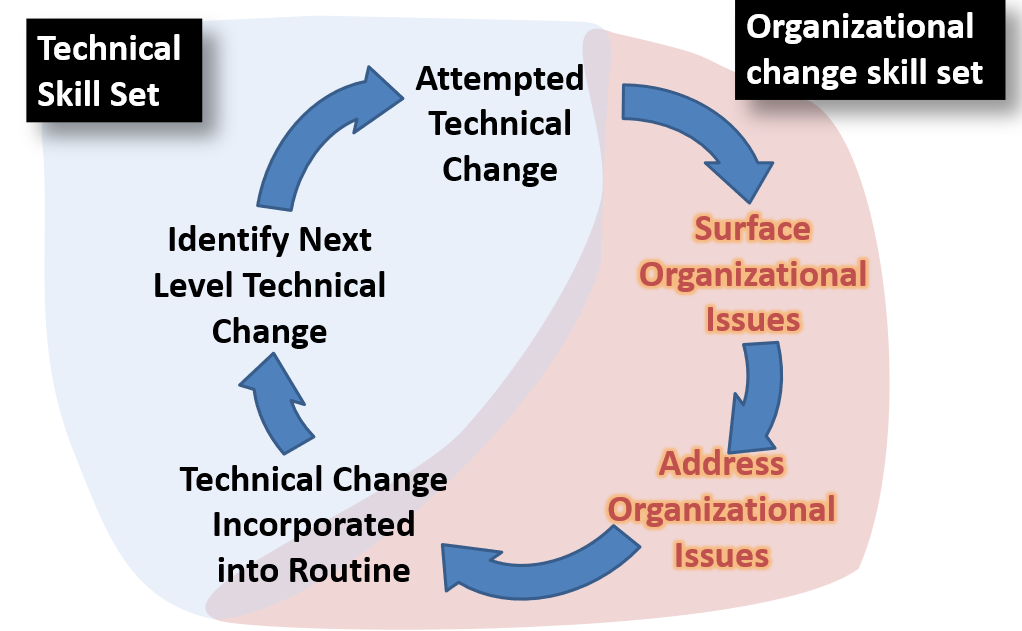Whether you are a line leader or an internal or external consultant, if you are reading this you are likely working to shift the culture of your organization.
The technical “tools” alone are pretty useless unless you are already operating in the kind of culture that embeds the mechanisms of learning and collaboration deep into the structure of day-to-day work. If that kind of culture isn’t present, the “lean tools” will reveal those issues just as quickly (more quickly, in fact) as they reveal shortages, work balance mismatches and quality problems.

Making these kinds of changes is a lot harder than teaching people about how the “lean tools” work, and a lot of change agents are frustrated by the perception that the changes are not sustaining or being supported.
Back in February 2019 I gave a talk at KataCon5 in Savannah on some of the challenges change agents face when trying to influence how people respond to challenges and interact with one another. Here is the direct link in case the embed doesn’t work for you: https://youtu.be/NnvwOF4J3g8
As you watch the video (assuming you are *smile*) give some thought to how well you can paint a picture of how your efforts are influencing the patterns of interaction within the organization. Do you have something in mind for what you are trying to achieve there? What patterns are you actually observing?
And what is your role in those dynamics? How do you influence the patterns of who talks to whom, how, when, and about what? Are you acting as an intermediator between groups that don’t communicate or who are antagonistic toward one another? If so, what would happen if you stopped?
What happens when a production team member, or a nurse doing rounds on the med-surg floor, or your front-line customer service agent encounters something that is different than it should be? What is the threshold of starting action?
All of these things are cultural norms. And the “lean tools” all impact those norms in ways that people often are not prepared for.
None of these questions are on a checklist. Rather, they are the kinds of things to think about.
This is my first time exploring the concept of creating cultural change in an organization through lean principles. My organization has deeply rooted cultural issues, but many individuals in this organization are looking for change. I am an intermediary leader in my organization, a middle manager of sorts. I am directly responsible for this I work with, and we have a close working relationship. However those about myself have no feasible understanding of what it is like to work in their shoes. Do you believe someone in my position can bring the change needed to the culture in my organization, or do I need to try and convince senior leaders to roll out changes themselves?
Joshua – I replied directly by email.
I have some prior knowledge of Kata but I’ve never actually thought of it in the leadership role. I’ve always applied the method to continuous improvement, overlooking how leaders can use it as a tool. Very interesting post and the video was great. Thank you